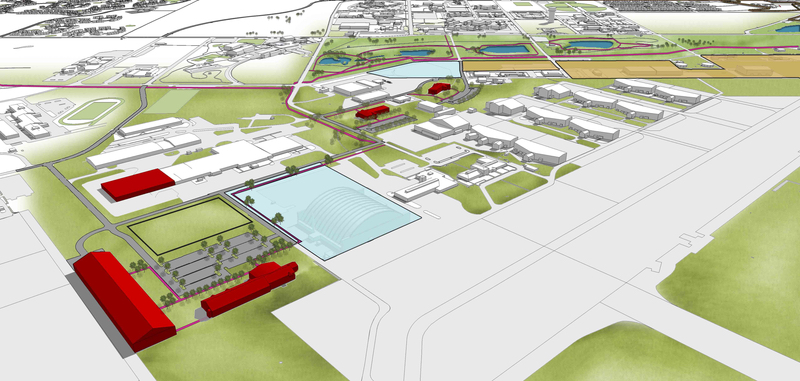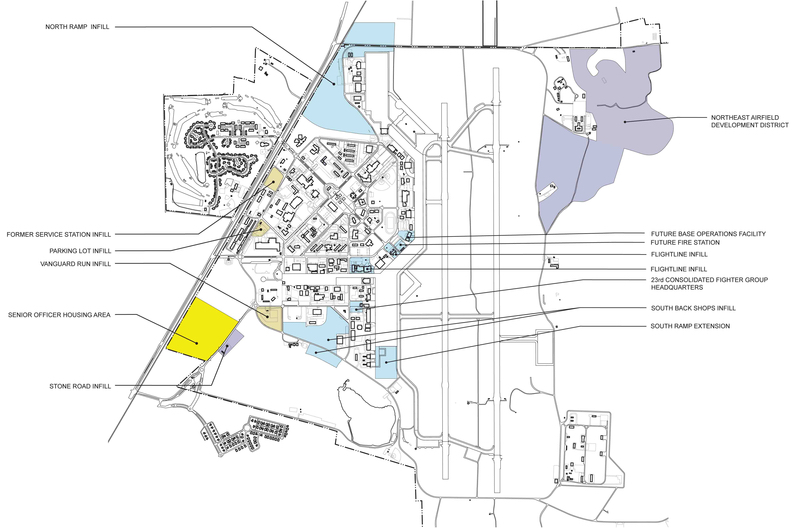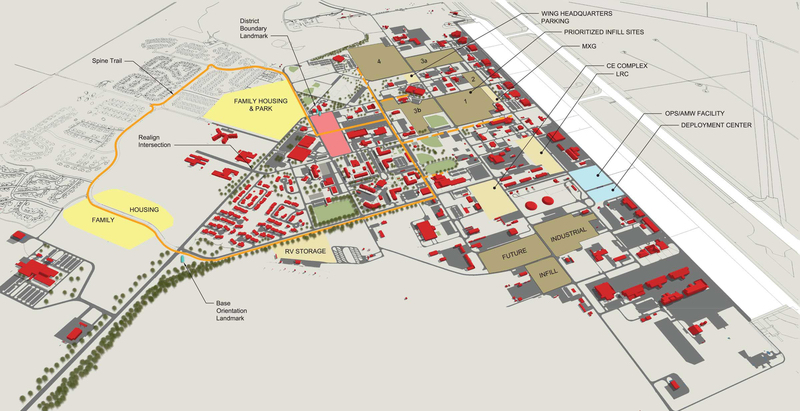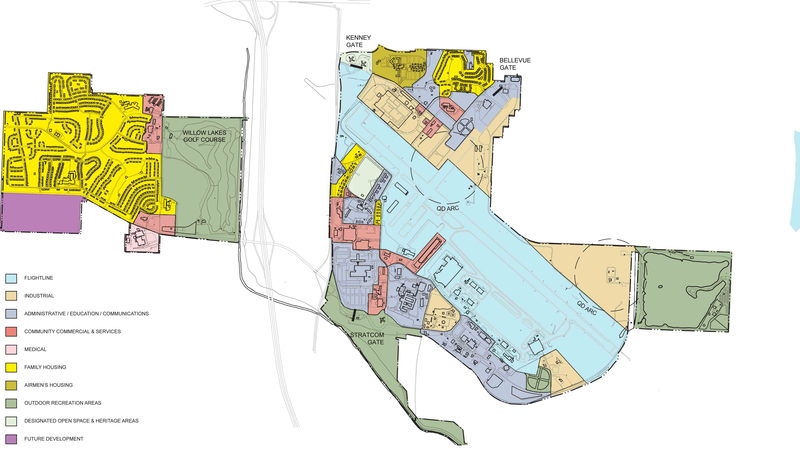Installation Design & Development Guides
Nationwide Air Force Bases
Installation Development and Design (ID2) Guides enhance installation sustainability by identifying and prioritizing redevelopment opportunities, leveraging existing infrastructure, improving on-base pedestrian and bicycle access, and encouraging context-sensitive design.
Big Muddy was part of a design team assisting United States Air Force – Air Combat Command in creating a new type of Installation Design and Development (ID2) guide that incorporates sustainable development and high-performance green building concepts for four of the Command’s 16 bases worldwide – Mountain Home, Ellsworth, Offutt, and Moody Air Force Bases.
The ID2 includes an “image analysis” of each base that examines the legibility of on-base travel routes, landmarks, and districts. This analysis is intended to assist designers in using new construction projects to provide landmarks for navigation, to create logical land use patterns for foster mission effectiveness and expandability, and to improve the visual character of each Base.




The land planning element in the ID2’s development considerations section encourages reuse of existing buildings and infill on available sites within developed portions of bases versus continued “green field” development for new facilities at the bases’ peripheries. Each installation guide identifies key infill sites on that base and prioritizes their reuse, based upon a design charrette held with base Civil Engineering staff.
Green infrastructure issues were addressed in the design guidelines section. The guide encourages active management of urban forests and street trees, shared use of parking to minimize impervious surfaces and decrease heat-island effects, use of native plants in landscape plantings, and innovative stormwater management to decrease run-off including bioswales, bioretention gardens, permeable and pervious pavements, and rainwater harvest systems.